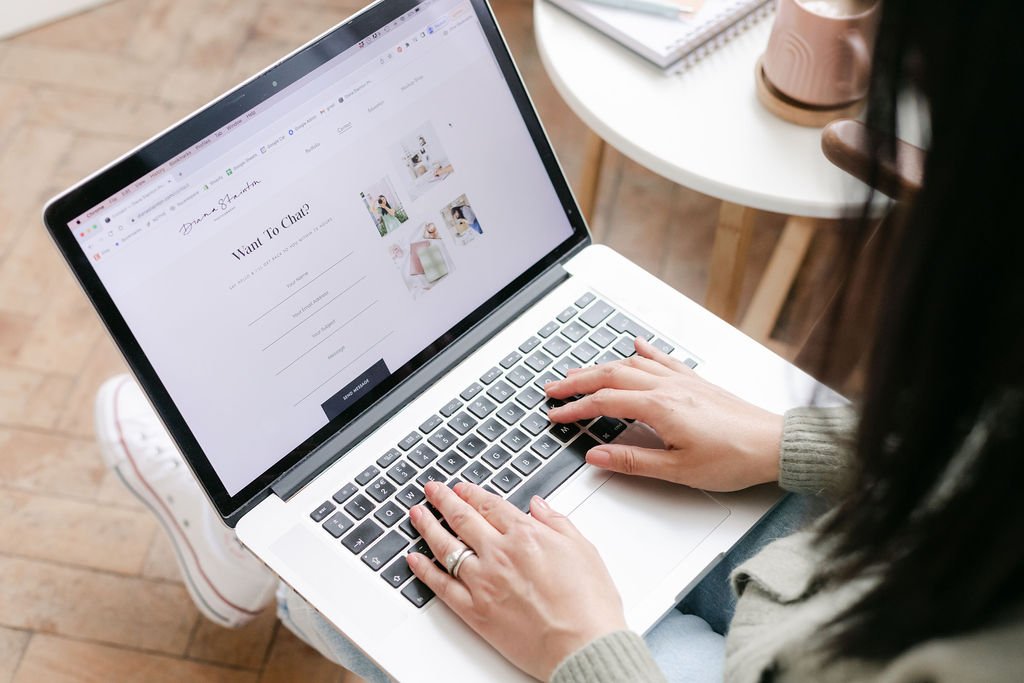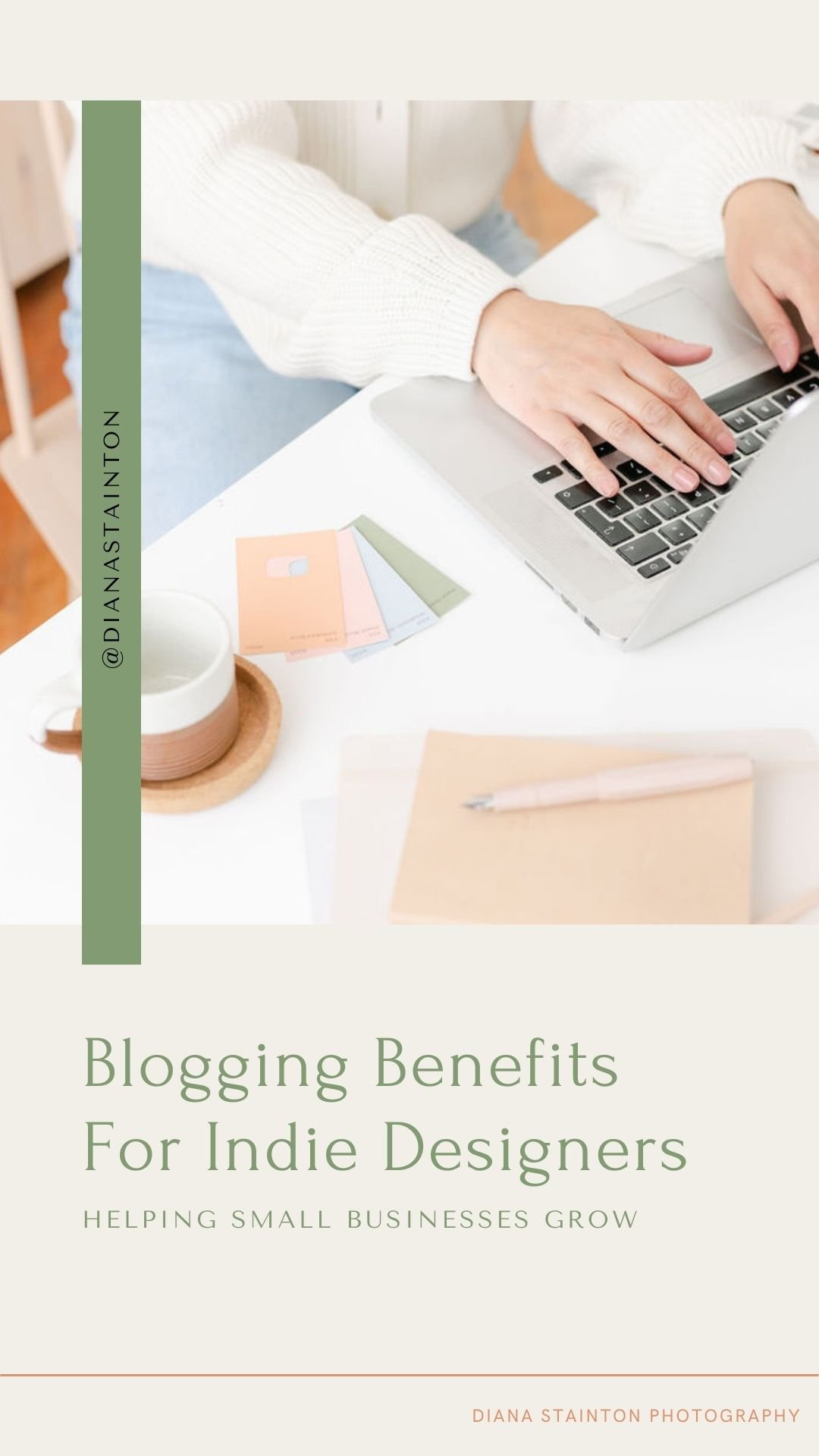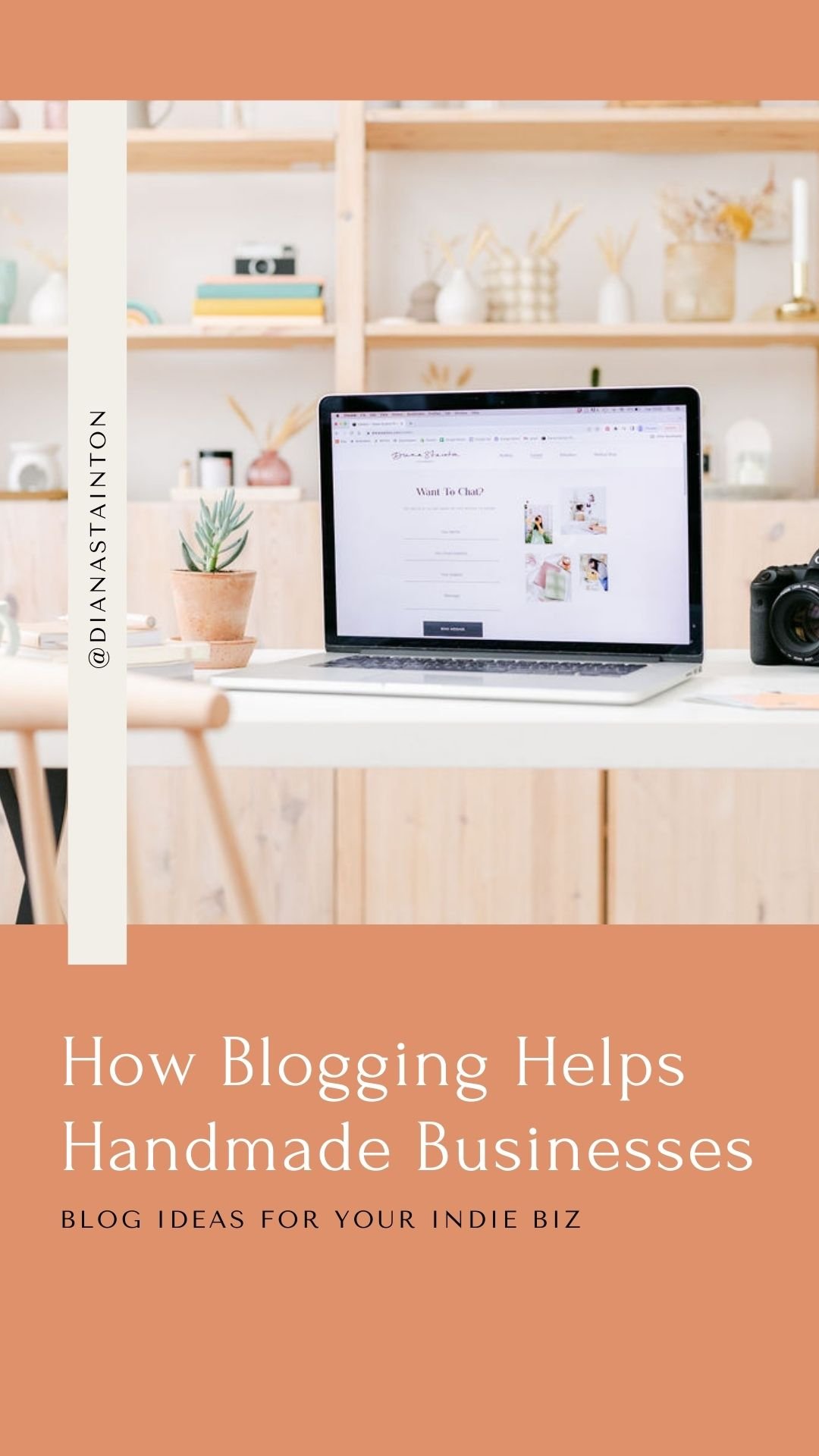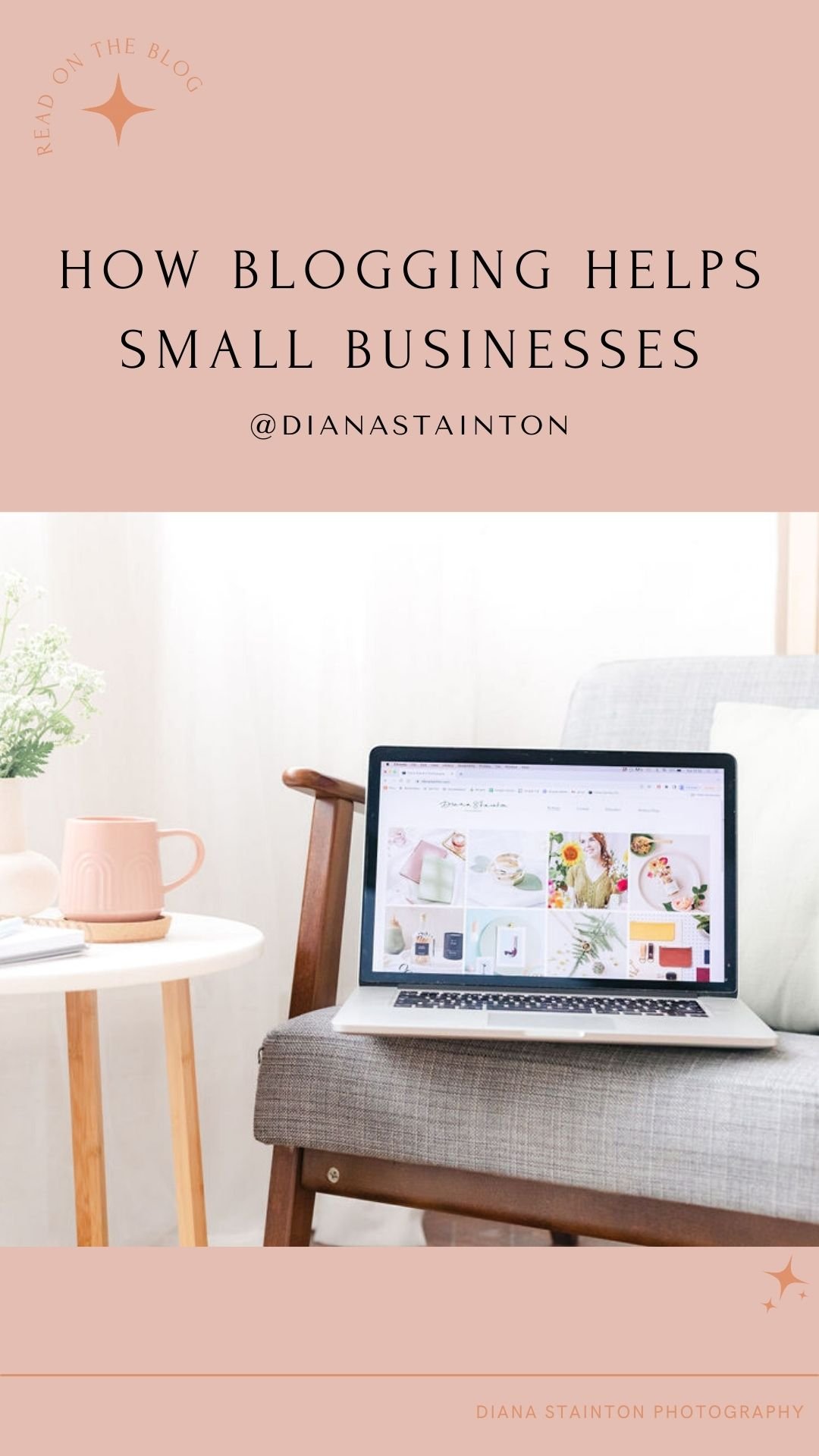Boost Your Brand With Blogging
If you own a small business, it's likely that you are debating whether blogging is worthwhile. And the answer is yes! A frequent blogging schedule for your small business can improve your inbound marketing strategies, increase website traffic, and draw in more potential customers.
You want to sell your products and make sales but you are not sure of the most effective way to make people trust your brand and products. The simple answer here is through blogging. Blogging builds trust with your audience as well as with Google. The more you blog the more Google will trust you and push your content to your ideal customers.
If you own a small business, whether you are an independent designer or a handmade business, you might be unsure whether blogging is worth the buzz. In this blog post, I am going to tell you how blogging helps small businesses, like you.
How Will Blogging Benefit You
If you are a small business owner you know that you need to do your marketing to reach your dream customers, but you are stuck with how to do this.
Blogging is the perfect place to reach your ideal customers because everyone uses Google to search for services, ask questions and look for tips and ideas. Therefore, you need to show them that you can help them!
Become a Reliable Source on Google
Search engines love to provide fresh, valuable content to searchers and the best way to show google you are this valuable source is by blogging.
You need to be blogging consistently so Google and other search engines have new content to index and you create opportunities to plug in those all-important keywords to increase your visibility on search engine results pages.
Build Relationships and Trust With Current and Potential Clients
Blogging allows you to connect with people who visit your site (potential customers). Adding CTA’s (call to action) to your blogs allows your viewers to contact you and start a conversation. As well as this you can encourage readers to comment on your blog post.
By reviewing and responding to readers’ comments, you can create a rapport with your audience, build trust, and gain valuable insight into what your customers are looking for.
Build Authority and Be An Industry Leader
No matter how small your business is, you can build trust and authority within your industry by providing valuable, expert information in your blog posts.
Over time, you become an authoritative resource for helpful, informative content and Google will recognise this. This will lead to higher customer conversion rates.
You will only achieve this through well-optimised blogs and consistency!
Provide Value for Your Readers
You want to provide value to visitors. Posts that help them solve problems or include tips to make something in their life easier or better are far more interesting to potential customers than ads.
Of course, your products will be part of the solutions you provide in your posts, but in a subtle, helpful way. You want to answer their questions and problems and this will more likely lead to them trusting you as a brand.
Generate Leads
You can use your blog posts to get emails from interested leads by asking them to subscribe to your blog posts.
Those emails can then be used for marketing purposes to increase touch points. This is a great way to promote your business, send special promotions, and more. The more you can connect with a lead, the better chance you have to convert them into a customer.
So, how do you optimise your blogs?
There are many ways you can optimise your blog and doing it correctly is key to success.
Keyword Research
Keyword research is vital for your blogs. It helps you find topics your users are interested in based on search engine data.
Once you have conducted your research, you can use these keywords to plan your content strategy. So blogging can help your small business, this will ensure that you write about topics that your ideal customers are actually looking for.
A great tool you can use for your keyword research is Ubersuggest, the free version is great for beginners.
After you have done your keyword research and discovered keyword ideas, you should choose one keyword that has the highest search volume and low competition.
This will be your focus keyword. Use this in your main title of the blog as a long tail keyword and then implement it throughout your blog as a short tail keyword.
As well as this, implement other keywords into your blog. However, it is important that you don’t overuse them in your content. This would look odd to your users, and Google does not like this which will ruin your chances of ranking.
Internal Links
Once you have built up a good chunk of blogs on your website, you will have enough content that you want users to read. With internal linking, you can send readers to check out your older posts that are of course relevant to the current blog posts.
Use Images and Optimise Them
Adding images and videos are much more engaging to your readers.
You need to be cautious regarding image copyrights while adding images. Beginners frequently copy photographs from other websites for their own use, which is illegal if done without the right authorisation.
Additionally, you can use your own photos or other web design tools like Adobe Photoshop or Canva to make your own.
You can outsource a brand photographer, like me, to take your images for you to really represent your brand image in a clear and professional way.
Once you’re finished creating your images, you need to make sure to optimise your images for SEO. You can optimise your blog images by:
File size: Download the size of the image your need rather than just going for the highest possible resolution. Close to 1920 x 1080 is good as that’s the most common screen resolution although you should be aware that screen resolutions are creeping up again in recent years. Aim for a file size of 200kb.
Choosing the right file type for your blog is easy. Use JPGs for all images unless you need transparency features, in which case use PNGs. If it’s animated, use GIFs.
All the blog images in a single blog post should be properly named. You can title the images with the topic of the post. Better, if you can use the keywords in it. This will improve the website's image SEO.
There isn’t a set limit on how many images to use on your blog, but just make sure they are structured nicely throughout the blog post and as a general consensus use one image per 150 words.
Add your graphics to post your blogs and link them to your Pinterest for wider reach.
Add a Meta Description
The meta description is the HTML meta tag that you can add to your pages. Its purpose is to provide a short description of your blog post for search engines and other crawlers.
Make it enticing and has all the relevant information to make the reader want to click and read more.
Structure
Make the blog post easy to read and digestible. Keep paragraphs small as big chunky paragraphs can be very off-putting.
Google also recognises well-structured blogs and is more likely to rank you if it’s structured correctly. Make use of your H1, H2, H3 and H4 titles.
FEATURE ON OTHER BLOGS
Featuring other people's blogs and you featuring people on your blog is a great way to optimise your blog. This is known as backlinking. Backlinks represent a "vote of confidence" from one site to another which Google loves. It shows you are trusted and it builds your authority on Google.
For example, I love to feature my clients in my blog, called my clients spotlight. This helps my clients with link building for their online shops!
Repurpose Your Blog Posts
I understand that sometimes we are in a creative rut when it comes to social media posts. Incorporate your blog posts as part of your social media strategy by repurposing your content! Take the main points from your blog post and create your content based on this.
Topics you Can Use for Your Blog
As explained previously you need to do your keyword research to know what your ideal clients are searching for.
However, here are some ideas:
Gift or product guides. Think of the season and base content on what people will be searching for during this time. For example, a Christmas gift guide.
Tips and Tutorials. Show your knowledge and expertise!
Behind the Scenes. Show off your team, how you work, and how you make products, this helps build trust with potential clients.
Expert Information. Answer your most asked questions and create an FAQ blog. Use your keyword research to find the most searched questions.
Creating evergreen content is great for selling products available all year round. As mentioned, staying consistent with blogging is important to stay relevant and reach ideal customers, but if your content is not evergreen you are only reaching potential customers at certain times of the year.
Have Fun With Blog Writing!
It’s essential to have fun with it! Inspiration and creativity will come from you, so your mindset is important. Be yourself, use your own tone of voice and write what comes from your heart! If you simply do not have the time or lack creativity and energy, consider outsourcing!
LIKE THIS ARTICLE? PIN IT FOR LATER












